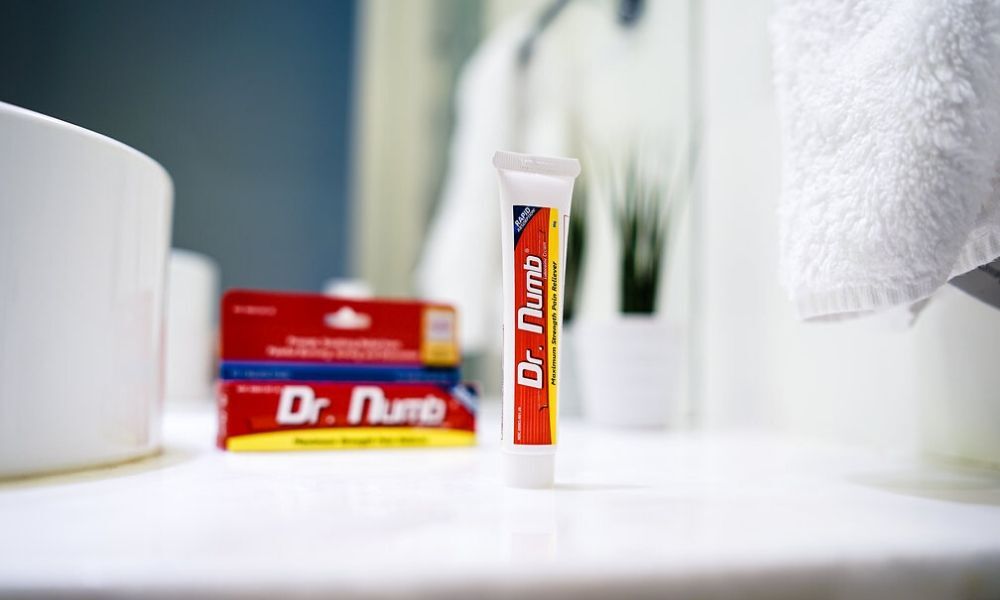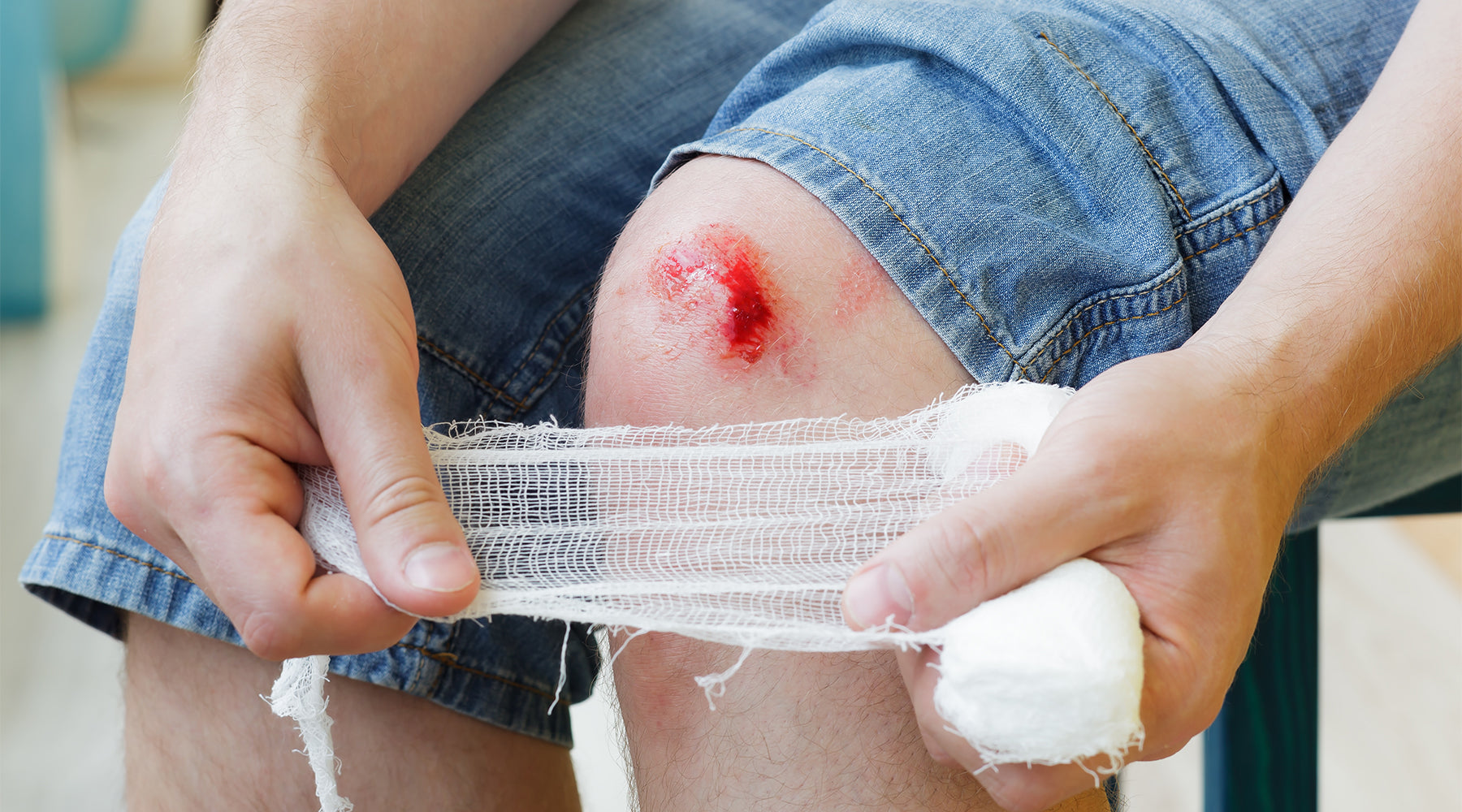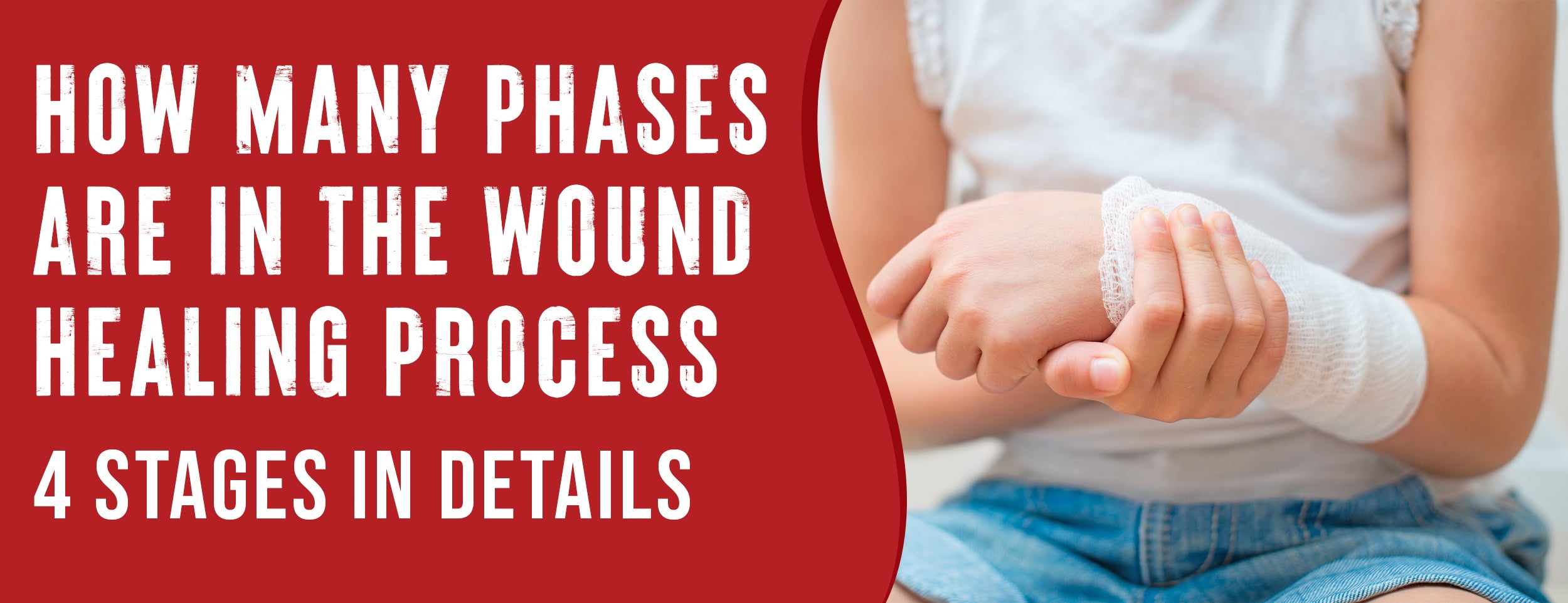Apply a generous amount of numbing cream, rubbing it in thoroughly until fully absorbed. Wrap the area with plastic wrap to activate and prevent the cream from drying.
Numbing cream is a topical solution that helps alleviate discomfort by numbing the skin before an injection, laser treatment, or any other procedure. But how do you use numbing cream effectively?
In this article, we will guide you on using numbing cream based on different situations and provide essential information to consider before purchasing.
How to Use Numbing Cream: Based on Different Situations

Numbing creams have been widely used to alleviate pain during various medical procedures. We will discuss different situations in which numbing cream can be used and how to use numbing cream in a professional tone.
Numbing Cream for Abscess
An abscess is a painful, swollen lump that appears on the skin. If you have a pimple, you will know how unbearable the pain can be. A numbing cream can help alleviate this discomfort, making the procedure more tolerable.
How to use for abscess:
- Apply a thin layer of numbing cream on and around the affected area.
- Allow it to sit for a few minutes before the procedure.
- Wipe it off before the process begins.
Numbing Cream Allergy Testing
Before using any numbing cream, you must check if you are allergic to its components. Allergy testing will help determine whether you can safely apply the numbing cream.
How to conduct numbing cream allergy testing:
- Apply a small amount of the cream on your forearm.
- Wait for 30 minutes to see any allergic reaction.
- If you notice any redness, swelling, or itching, DO NOT use the numbing cream.

Numbing Cream for Arthritis
Arthritis is a condition that can cause severe joint pain and inflammation. A numbing cream can temporarily relieve those with arthritis, allowing them to perform their daily activities easily.
How to use for arthritis:
- Massage the cream onto the affected joint.
- Wait for a few minutes before experiencing the numbing effect.
- Reapply as and when necessary.
Numbing Cream for Blood Draw
Blood samples can be painful to draw. Use a numbing cream to ease the discomfort, making it a less painful experience.
How to use for blood draws:
- Apply a generous amount of cream to the area where the needle will enter.
- Use plastic wrap to enhance the numbing effects.
- Allow 30-60 minutes for the procedure.
Numbing Cream for Eyebrow Threading
Eyebrow threading involves plucking hair from the roots. It can be a painful experience. If you want to make a process painless, you can use Dr. Numb® numbing cream.
How to use for eyebrow threading:
- Place a thin layer of cream on the area to be threaded.
- Take a few minutes to start the process.
- Wipe it off before starting the process.
Numbing Cream for Fillers
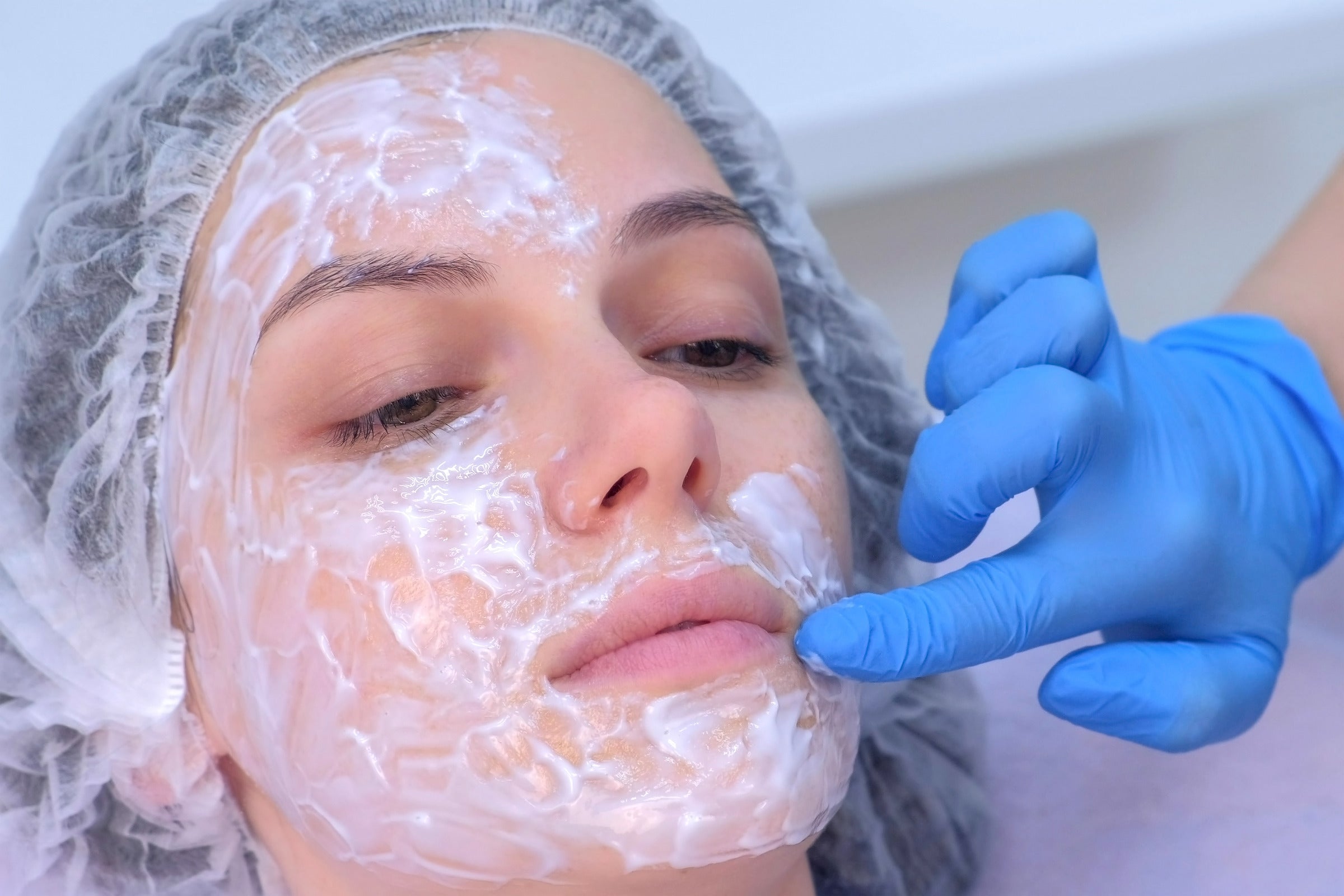
Many filler procedures include an injection, which can be painful without any numbing agent. A numbing cream can ease discomfort, making it a comfortable experience.
How to use fillers:
- Cream generously over the area where the injection will be made.
- Wait for 30-60 minutes before starting the procedure.
Numbing Cream for Fistula
A fistula is an abnormal connection between two body parts, which can be painful and challenging to treat. A numbing cream can help manage the discomfort effectively.
How to use for fistula:
- Apply a thin layer of cream to the affected area.
- Start the treatment after waiting a few minutes.
- Start the treatment by wiping it off.
Numbing Cream for Bee Stings
Bee stings can be painful and also cause swelling. Comfortable healing is made more accessible with a numbing cream. Discomfort and swelling, making healing more manageable.
How to use for bee stings:
- Cream the affected area generously.
- You will feel numb after a few minutes.

Numbing Cream for Burns
Burns are one of the most painful injuries, which can take weeks to heal. When applied to a burn, numbing cream can ease the pain, allowing the individual to go about daily activities without discomfort. The following points are essential to consider when using numbing cream for burns:
- Topical numbing creams may not be effective for severe burns.
- Apply a thin layer of the cream on the affected area.
- Avoid applying near the eyes or mouth.
- Follow the instructions from the medical professional.
Numbing Cream for Itch
Itch is a common symptom associated with skin irritation, such as rashes, bug bites, or eczema. Numbing cream can alleviate the discomfort caused by itching. Here are some tips for using numbing cream for itch:
- Apply the cream to the affected area.
- Wait for the cream to soak in before touching the area.
- Avoid scratching the area.
- Follow your doctor's instructions.
Numbing Cream for Scabies
Scabies is a skin condition that causes intense itching and rashes. It is possible to relieve the pain and discomfort caused by scabies. Here are some essential things to consider when applying numbing cream to treat scabies:
- Creams that numb the skin may not work against scabies eggs.
- Do not apply the cream on open sores.
- Do not apply near your eyes or mouth.
- Medical professionals should be followed.
Numbing Cream for Laser Treatments
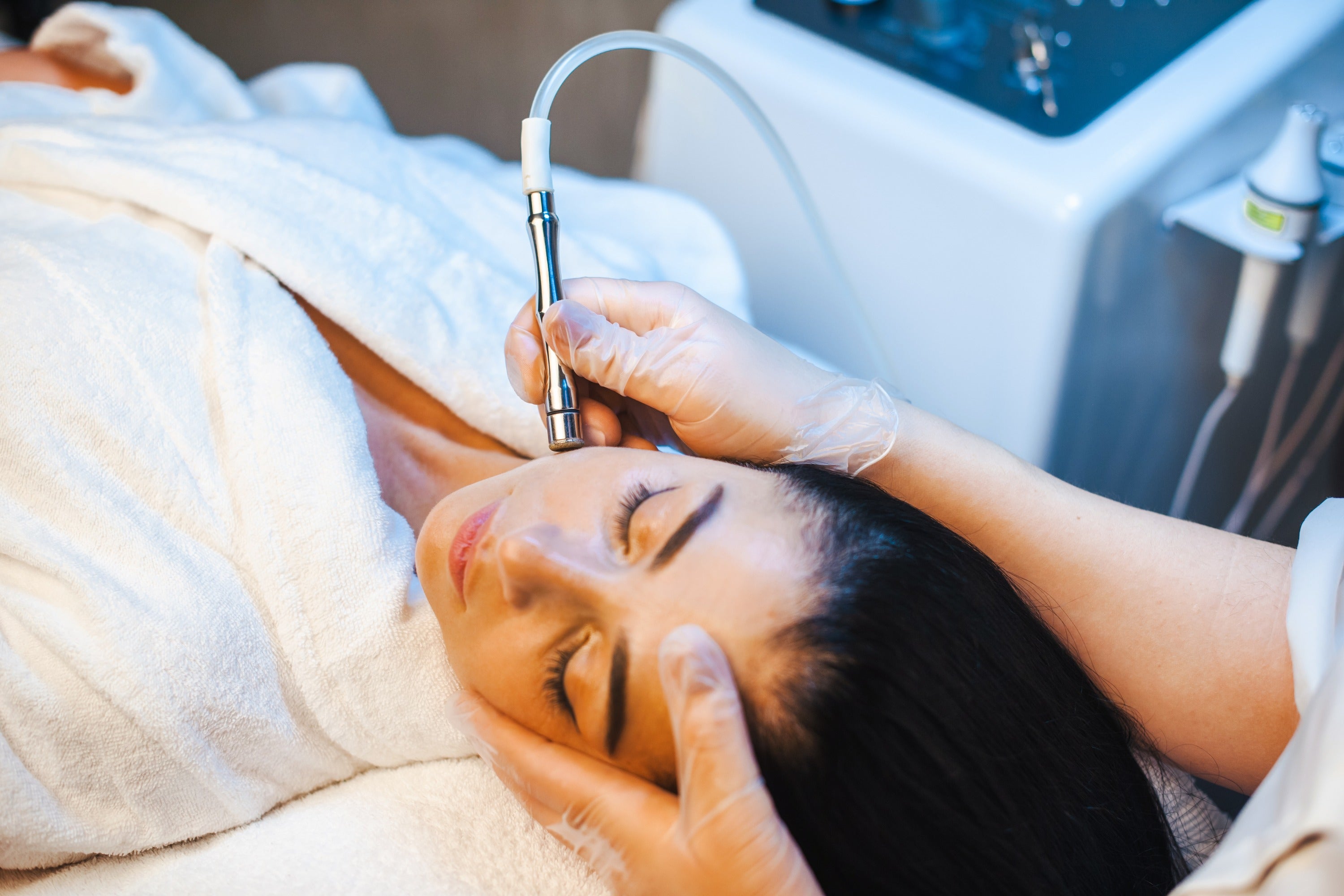
Laser treatments can be painful, such as tattoo removal or skin resurfacing. Numbing cream can make the procedure more comfortable. Numbing cream tips for laser treatments:
- Apply the cream 30 minutes before the process.
- Cover the area in plastic to amplify the effect.
- Make sure not to apply near the eyes or mouth.
- Observe the medical professional's instructions.
Numbing Cream for Laser Treatment
Laser treatment can be hard to endure without numbing cream. Here are some benefits of laser treatment numbing cream:
- Reduces the discomfort during the procedure.
- Allows the patient to relax.
- Enables the medical professional to work without distractions.
- Improves the overall quality of the process.
Use Numbing Creams for Laser Hair Removal
Laser hair removal can be a painful process. Numbing cream can help to ease the discomfort during the procedure. Here are some things to consider before using numbing cream for laser hair removal treatment:
- Applied 30 minutes before the process.
- Using plastic wrap will enhance the effect.
- Apply away from the eyes and mouth.
- Observe the medical professional's instructions

Numbing Cream for Permanent Makeup
Getting permanent makeup can be an uncomfortable process. A numbing cream can ease pain and discomfort. Use numbing cream safely with permanent makeup:
- 30 minutes before the procedure, apply the cream.
- Plastic wrap can enhance the effect.
- Don't get it near your eyes or mouth.
- Medical professionals should be followed.
Numbing Cream for Permanent Makeup
Permanent makeup procedures involve tattooing, which can be painful. Numbing cream can help to alleviate the discomfort. Here are some benefits of numbing cream during permanent makeup procedures:
- Reduces the pain and discomfort during the process.
- Ensures that the procedure can be completed with minimal interruption.
- Increases the satisfaction of the patient with the overall process.
- Makes the experience more pleasant for both the patient and the medical professional.
Numbing Cream When Pregnant: Safety and Application
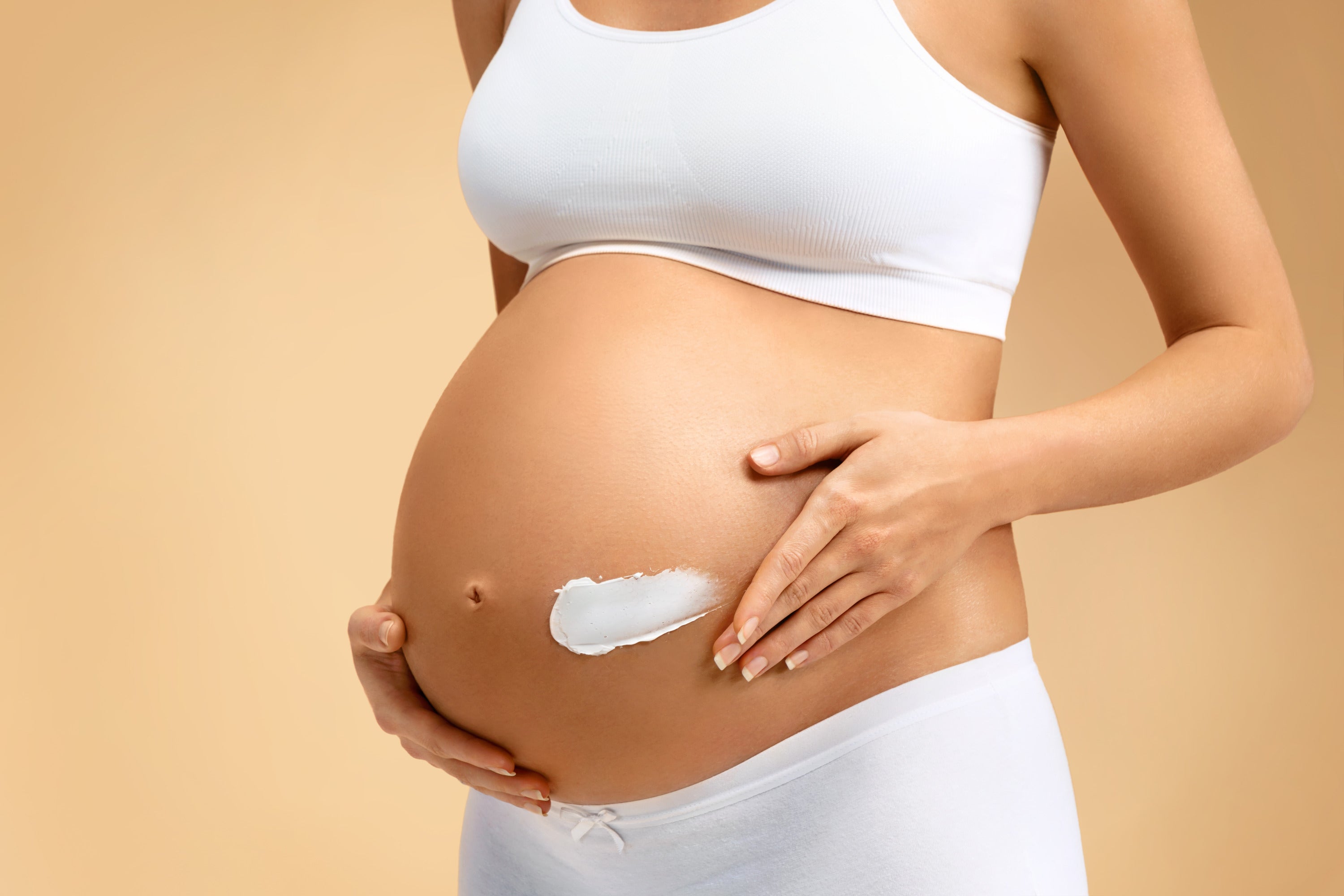
Pregnant women may be concerned about using numbing cream during medical procedures. Consider these factors when using numbing cream when pregnant:
- Consult with a medical professional before using any topical product.
- Avoid using numbing cream containing lidocaine.
- Apply numbing cream sparsely and not on large areas.
- You should follow the doctor's instructions.
Numbing Cream for Lip Augmentation
Lip enhancements are a great way to give your lips a fuller and more defined appearance. The procedure can be quite uncomfortable, especially for those with a lower pain threshold. Numbing creams can significantly enhance the experience by decreasing any pain or discomfort associated with the procedure. Here are some tips on how to use numbing cream when getting a lip augmentation:
- Apply the numbing cream 20-30 minutes before the procedure.
- Put it on thinly over the lips without rubbing it in.
- Cover the area with a plastic wrap to maximize the effectiveness of the cream.
- Wipe off the cream before the procedure begins.
Numbing Cream for Yeast Infections
Yeast infections can be highly uncomfortable, and while antifungal medication can provide relief, numbing creams can also address the discomfort that comes with these infections. Numbing cream tips for treating yeast infections:
- Apply the numbing cream to the affected area, covering any external symptoms.
- Wash your hands before and after applying the cream to avoid further spreading the infection.
- Consult your healthcare provider before using any numbing cream for yeast infections.

Numbing Creams Improve Cosmetic Treatments
Numbing creams are not limited to lip augmentations. They can also be used in cosmetic treatments such as laser hair removal, tattooing, and even botox. Here are some other cosmetic treatments that can benefit from numbing cream:
- Laser hair removal: Numb your skin 30 minutes in advance.
- Tattooing: Apply a thick layer of the cream at least an hour before the procedure.
- Botox injections: Apply a small amount of Dr. Numb® cream 15-20 minutes before the procedure.
Biopsy Pain and Numbing Cream
Biopsies are medical procedures that involve the extraction of tissue samples for examination. These procedures can be painful, but numbing creams can help alleviate the pain. Here are some tips on using numbing cream during biopsies:
- To numb the area 30-60 minutes before surgery.
- The cream will work better if it is covered with plastic wrap.
- Numbing creams should not be used during biopsies.
Numbing Cream for Joint Pain: Dr. Numb
Dr. Numb is a numbing cream that is perfect for joint pain. It contains lidocaine, which is a local anesthetic that works by blocking pain signals. Tips for using Dr. Numb:
- Apply a thick layer of Dr. Numb to the affected joint.
- The cream will be most effective if you wrap it in plastic wrap.
- Wash off the cream after 30-45 minutes.
Numbing Cream for Osteoarthritis Pain

Osteoarthritis pain can be debilitating and affect your quality of life. Numbing creams can be used to manage the pain associated with osteoarthritis. Osteoarthritis numbing cream tips:
- Numb the involved joint 30 minutes before exercising.
- You should remove the cream after 30 to 45 minutes.
Anaesthetic Numbing Cream Selection
Choosing the proper anesthetic numbing cream can be overwhelming. Consider these factors when selecting the perfect numbing cream:
- The concentration of the active ingredient.
- The intended use of the cream.
- The length of time for which the cream needs to be applied.
- Any allergies to the ingredients in the cream.
Numbing Cream for Severe Liver Disease
A numbing cream should not be used for patients with severe liver disease. The active ingredients in the cream can have toxic effects on the liver before using liver numbing cream.
Numbing Cream Containing 5% Lidocaine: Maximizing Effectiveness
Numbing creams containing 5% lidocaine are highly effective in temporarily relieving pain and discomfort.
How to use numbing cream containing 5% lidocaine:
- Read the label carefully before use.
- Do NOT use more than the recommended dosage.
- Consult with your doctor before using the cream.
Numbing Cream Expiry: Safety and Potency
Numbing creams have an expiry date. It is important to use a cream before it expires to ensure its efficacy and safety.
How to check numbing cream expiry:
- Check the label for the expiry date.
- Do Not use the cream if it has expired.

Use Numbing Cream: Top 3 Reasons
A topical numbing cream can provide several benefits for different types of pain or discomfort. Whether for a medical procedure or a beauty treatment, a numbing cream can help ease the pain and make the experience more bearable. Let’s look at the top benefits of using a topical numbing cream.
Reduces Pain and Discomfort
One of the most significant effects of topical numbing cream is its ability to reduce pain and discomfort. This is particularly beneficial for medical and cosmetic procedures that can be pretty painful. A numbing cream provides temporary relief by blocking the pain signals your nerves send to your brain.
Increases Patient Comfort
A numbing cream can make the experience more comfortable for patients by effectively reducing pain and discomfort. They can relax and be less anxious, which can help the procedure go more smoothly. Patients can also receive treatments without worrying about the pain, allowing them to focus on the treatment results.
Speeds Up Recovery Time
A numbing cream can also speed up recovery by reducing inflammation and swelling after a procedure. When a patient is less anxious and relaxed, their body is more likely to recover quickly. Additionally, with reduced pain, the need for pain medication may be lessened, contributing to faster recovery time.
Use of Numbing Cream: Choosing Fact
Numbing cream can be helpful when seeking a pain-free experience for various cosmetic or medical procedures. It alleviates discomfort by temporarily numbing the skin or the area of application. Choosing and using numbing cream requires careful consideration to ensure safety and effectiveness.
Buy the Right Numbing Cream: 4 Things to Consider
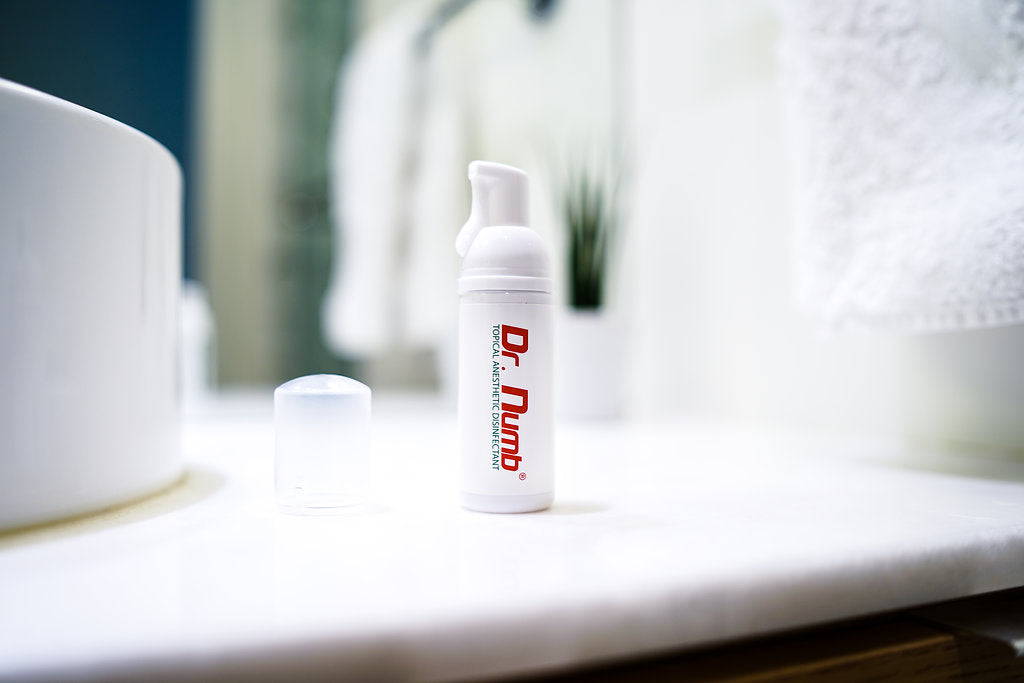
When it comes to selecting the appropriate numbing cream, you should focus on four critical factors:
- Ingredients: Look for creams containing safe and effective numbing agents like lidocaine or benzocaine. Avoid creams with ingredients that you may be allergic to.
- Concentration: Check the attention of the numbing agent. Higher concentrations usually provide better numbing effects, but consult a healthcare professional to determine the appropriate concentration for your needs.
- Application Area: Consider where you'll be using the cream. Some numbing creams are designed for specific body areas, such as the face, while others may be more suitable for larger sizes.
- Duration of Numbing: Understand the expected time of numbing. Different creams have varying lengths of effectiveness, so choose one that aligns with the course of your intended procedure.
Considerations When Choosing a Numbing Cream
Aside from the essential factors mentioned above, several additional considerations can aid you in making an informed decision:
- Brand Reputation: Opt for numbing cream from reputable and well-reviewed brands to ensure product quality and effectiveness.
- Consult a Professional: If uncertain, consult a healthcare professional or a licensed aesthetician to get recommendations tailored to your needs.
- Pain Threshold: Assess your pain tolerance to choose a cream that suits your comfort level and the intensity of the procedure.
Buying Numbing Cream for Laser Treatment: What to Look For
Laser treatments often involve some discomfort, making numbing cream a valuable addition to the process. Here's what to consider:
- Compatibility with Laser: Ensure the numbing cream is safe with the specific type of laser used for your treatment.
- Consult Your Provider: Seek advice from your laser treatment provider to recommend a numbing cream that aligns with the treatment requirements.

Choosing the Perfect Anaesthetic Numbing Cream
To achieve the best results with your numbing cream, follow these guidelines:
- Clean the Area: Start with dry skin in the intended application area.
- Follow Instructions: Read and follow the instructions provided with the numbing cream carefully.
- Apply in Advance: Apply the cream at least 30 minutes before the procedure to allow sufficient time to take effect.
Using Numbing Cream the Right Way
To use the numbing cream effectively, consider these steps:
- Apply a Thin Layer: Use a spatula or cotton swab to apply a thin, even layer over the intended area.
- Cover the Area: Cover the cream-applied area with plastic wrap for better absorption.
- Avoid Abrasions: Refrain from rubbing or scratching the area after applying the cream to prevent abrasions.
Use Numbing Cream: Ingredients and Types
A numbing cream is a valuable tool in minimizing discomfort during various procedures. To utilize it effectively, one must comprehend its composition and the diverse types available in the market.
Ingredients in Numbing Cream: What Makes It Work
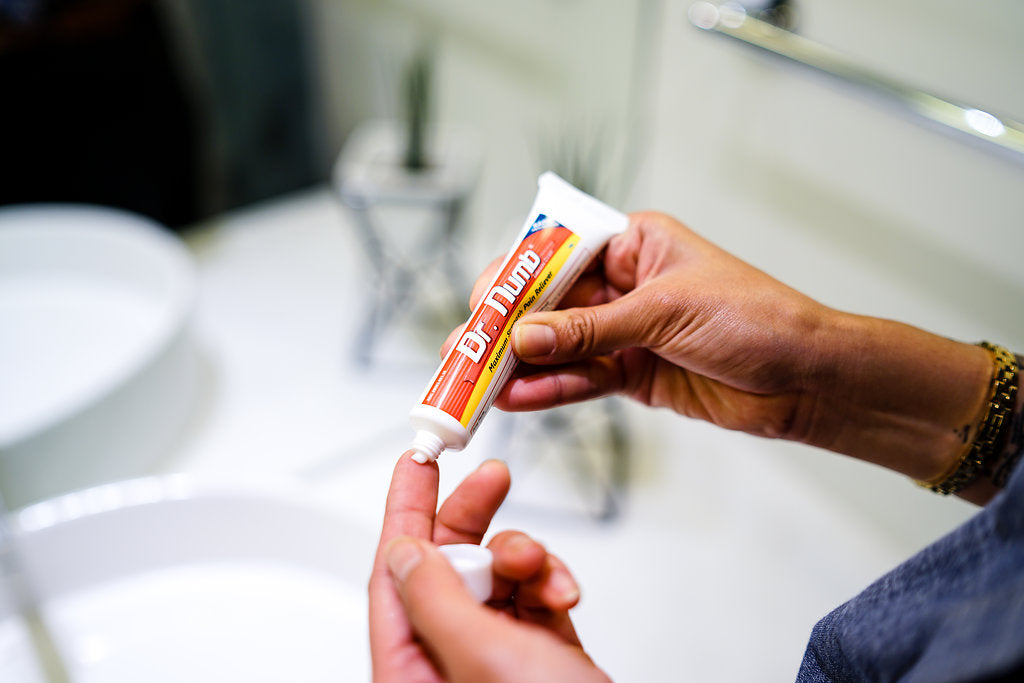
Numbing cream's effectiveness stems from its unique combination of ingredients, primarily targeting the nerve endings and reducing pain. Here are the main components responsible for its numbing effect:
- Lidocaine: A widely used local anesthetic that inhibits nerve signals, blocking the pain sensation.
- Benzocaine: Another common anesthetic that numbs the area by preventing the nerves from sending pain signals.
- Pramoxine: An ingredient known for its soothing and numbing effects on the skin.
Getting in Detail with Numbing Cream: Understanding the Composition
Numbing cream typically comprises a mix of the following components:
- Base: A carrier substance that holds the active ingredients and aids their absorption into the skin. Typical commands include creams, gels, ointments, and patches.
- Active Ingredients: The primary numbing agents like lidocaine, benzocaine, tetracaine, or pramoxine deliver the numbing effect.
Breaking Down the Ingredients in Numbing Cream
A deeper look into the composition reveals more about the main ingredients:
- Lidocaine: A fast-acting numbing agent often used in medical and cosmetic procedures.
- Benzocaine: Known for providing rapid relief from pain and itching.
- Pramoxine: Useful for alleviating minor pain and itching.
Things You Probably Didn't Know About Numbing Cream
Uncovering some lesser-known facts about numbing cream:
- Variability of Effectiveness: The effectiveness of numbing cream can vary from person to person based on factors like skin type, application area, and individual pain tolerance.
- Prescription vs. Over-the-counter: Numbing creams are available both over-the-counter and by prescription, with the latter often being stronger in concentration.
- Duration of Effect: Numbing can range from 30 minutes to a few hours, depending on the specific cream and its concentration.

Things to Consider When Buying Numbing Cream
When purchasing numbing cream, several aspects should be considered:
- Skin Sensitivity: Consider any known allergies or skin sensitivities to avoid adverse reactions.
- Procedure Type: Different procedures may require varying strengths and types of numbing cream.
- Consult a Professional: Seeking advice from a healthcare professional or aesthetician can guide you toward the right choice for your procedure.
Buying Numbing Cream: Top Things to Consider
Key factors to evaluate when purchasing numbing cream:
- Concentration of Active Ingredient: Opt for appropriate attention based on the intensity of the intended procedure and your pain tolerance.
- Brand Reputation: Choose a well-known and reputable brand to ensure quality and efficiency.
- User Reviews: Read reviews from other users to gauge the cream's effectiveness and suitability for your needs.
Applications of Numbing Cream
Numbing cream finds application in various medical and cosmetic procedures, including:
- Tattooing and Body Piercing.
- Laser Hair Removal.
- Microblading and Permanent Makeup.
- Minor Surgical Procedures.
Exploring Different Types of Numbing Solutions
Numbing solutions come in different forms, each suitable for specific applications:
- Creams and Gels: Ideal for surface applications, such as tattoos or minor surgeries.
- Patches: Effective for more extended numbing periods and often used in pain relief after medical procedures.
- Sprays: Provide a convenient way to numb larger areas quickly.
Top 5 Numbing Creams: A Comparative Overview
A comparison of some popular numbing creams such as Dr Numb® can help in making an informed choice based on factors like ingredients, effectiveness, and user reviews.
How to Use Numbing Cream: Tips and Considerations
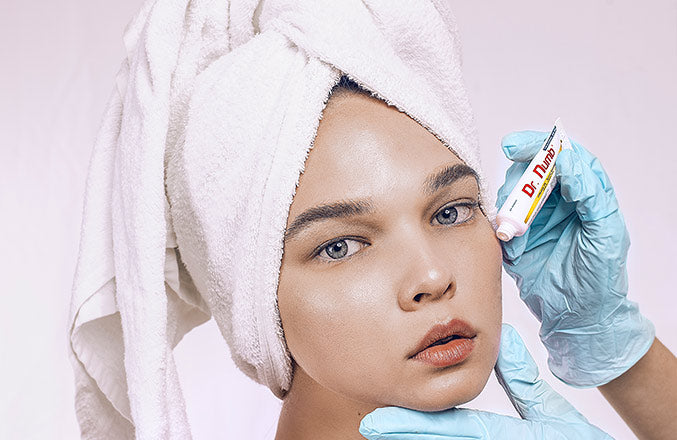
It is essential to approach their usage cautiously to avoid any adverse outcomes. We will discuss some essential tips and considerations when using numbing creams.
What to Keep in Mind When Using Numbing Cream
Before you decide to use numbing creams, it is essential to consult with your doctor, especially if you have a pre-existing medical condition or are taking medication. Additionally, here are some other critical things to remember:
- Always purchase numbing creams from reliable sources and well-known brands.
- Check the ingredients list to ensure you are not allergic to them.
- Do not apply numbing creams to open wounds or damaged skin.
- Avoid using more cream than is recommended.
- Make sure to follow the instructions provided by the manufacturer.

How to Apply Numbing Cream for Vaccinations: Step-by-Step
An anesthetic cream can ease the pain of vaccinations, which can be especially beneficial for children or people with needle phobia. The proper application technique can make all the difference. Here are the steps to follow:
- Wash the area with soap and water and pat it dry.
- Use some numbing cream and rub it in gently.
- Plastic wrap the area and secure it with medical tape.
- Leave the cream on for 30 minutes before vaccination.
Conclusion
Numbing cream is a convenient and effective way to manage pain and discomfort during medical procedures or daily life. The application of numbing creams can significantly decrease the sensation of pain by numbing the affected area. Effective use of numbing cream is essential to achieve maximum effectiveness.
The patch testing of the numbing cream is necessary before using it for any medical procedure. Proper application of the cream is the key to achieving the best possible outcome. Numbing cream can reduce the fear and anxiety associated with medical procedures, making them a more pleasant experience. So, next time you have to go through a medical process or get a piercing, remember to use numbing cream to relieve the pain.

